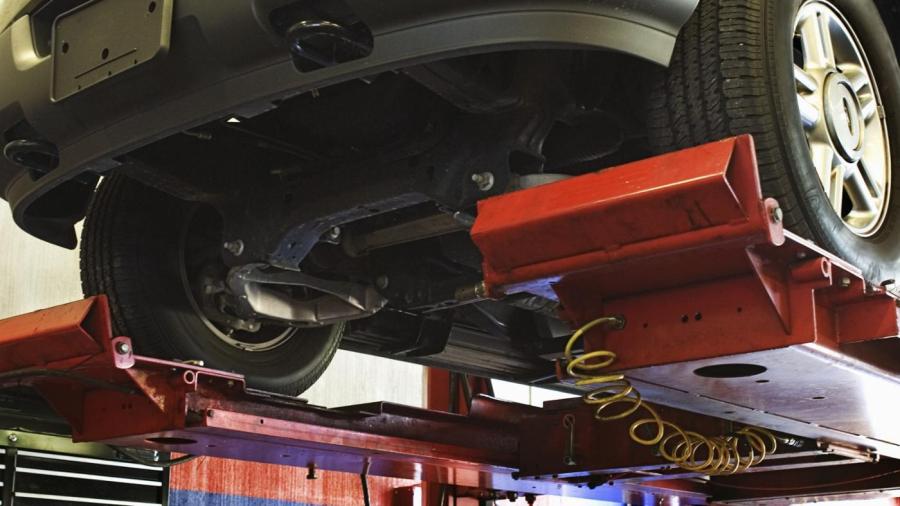What Is Undercarriage Damage?

Undercarriage damage refers to harm done to the supporting framework underneath a vehicle, according to Reference.com. The undercarriage holds vital parts, such as wheels, axles, brake lines and exhaust systems. Damage done on the road can be covered by insurance depending upon the circumstances.
Sudden undercarriage damage is caused by potholes, rocks in the road, fallen trees and even debris from other vehicles. Drivers with full coverage can file a collision claim for car insurance, and the owner would pay the deductible. About.com reveals that undercarriage damage caused by debris from other vehicles is a claim against the damaged car’s insurance as opposed to the other driver’s.
Salted roads in winter can corrode and rust the undercarriage. Rust and corrosion can wear down various parts of the undercarriage over time. Frequent washing and steaming of the underside of a car during cold months can help prevent rust, according to DMV.org. Waxing a car prevents rust damage to the undercarriage as well.
Even tough construction vehicles can suffer from undercarriage damage. Uneven weight on bulldozer tracks can cause wear and tear to the underside of such vehicles. Half of all maintenance costs to bulldozers come from the undercarriage. Steering the vehicle properly and avoiding overly rough terrain helps prevent such damage to construction vehicles.





